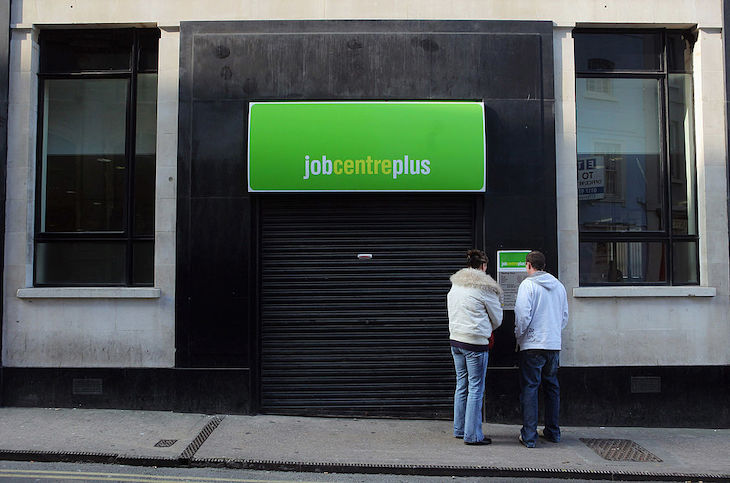Quietly, without even a press release let alone a fanfare, Britain over the past 12 months has just passed a grim milestone. The number of people on out of work benefits has surpassed the peak reached in the early 1990s. Indeed, it is higher now than it was at the peak of Covid-19 in 2020.
There are now 6.5 million people living on out of work benefits
Remember when unemployment of three million used to generate headlines every week, in the early 1980s and then again a decade later? Well, there are now 6.5 million people living on out of work benefits. Yet it hardly causes a ripple in the political pond because most of them are not officially ‘unemployed’ – they are either on disability benefits or on Universal Credit, many of them without any requirement to look for work.
How do we know this figure? Not because the government or even Her Majesty’s opposition has announced it, but because it has been revealed in the Substack blog written by Fraser Nelson, ex-editor of this magazine. Nelson has had to trawl through the Department for Work and Pensions’s database to get to the figure – and even then it might actually understate the current situation as the database is published with a six month delay.
Back in the 1980s, Margaret Thatcher’s government was accused of shunting people ‘on the sick’ in order to massage the official unemployment figures. Even so, the combined total of the unemployed, and people on sickness benefits, never exceeded 6 million – a total which has been reached in the past 12 months.
Official unemployment figures – which since the 1990s have been based on a questionnaire called the Labour Force Survey rather than on the number of claimants – have become a scam. They enable the government to boast of apparently low unemployment while the real picture is one of mass worklessness.
There is a terrible price to pay for this sleight of hand. While the unemployed used to be highly visible, the growing millions who have been signed off as unfit for work are not. They don’t necessarily have to visit Job Centres or unemployment offices in order to sign on every other week, as claimants had to do in the 1980s. Once they have gained their sick note – or ‘fit note’ as we are now supposed to call them in an Orwellian manipulation of the language – they can, in some cases, effectively carry on quiet lives at the taxpayers’ expense. They are unlikely to be disturbed. Since the pandemic, many claimants do not even have to present themselves for a face-to-face assessment; rather, they are carried out over the telephone. It has become laughably easy to play the system, with numerous TikTok accounts even providing coaching on how to get signed off, in many cases by claiming mental ill-health.
But there is another subtle consequence of the dishonest practice of shunting people from unemployment benefits to sickness benefits. Call someone ‘unemployed’ or a ‘job-seeker’ and there is an implication that they should be working. Government efforts tend to focus on creating job opportunities for them. Call them ‘sick’, on the other hand, and it becomes a moral outrage to expect them to work – a government which does that is kicking away the crutches of the unwell.
Keir Starmer came to power a year ago promising to get people back to work, but then cowered at the first hurdle when his own backbenchers revolted at the very principle of trimming the benefits. There is now zero hope of reform during the current Parliament. The economy is being compromised by having to lug along an ever-heavier deadweight of the economically inactive. And all the government will do is to try to cover up the scale of the disaster.








Comments